Huge appetite for data trusts, according to new ODI research
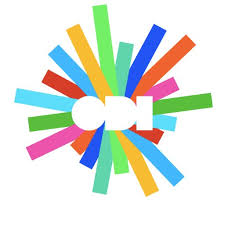 Open Data Institute
Open Data Institute
15 April 2019 12:00am
Debate: Tech giants moving into conservation in the future
12 April 2019 12:20pm
14 April 2019 1:43am
One concern I have is that just as tech companies tend to agglomerate into a monopoly, so too might thoughts regarding conservation. We might end up with a mental monoculture.
For instance, the popular wisdom at this time seems to be that we must priotitise the microplastic pollution problem, although some experts feel climate change is the more pressing issue. What can be tempting for a large company is to only concentrate on the thing they are best positioned to act upon. Given their pulpit and ubiquity, this view can become canon in the popular mind.
On the other hand, it's been commented that conservation efforts are so fragmented, that a powerful leader can unify these disparate NGOs under a common framework.
Suggestions or Preferences for content for this forum?
16 March 2019 3:27am
9 April 2019 6:00pm
Hey Akiba,
It would be great to have a conversation about what could be done in the field with IoT systems beyond virtual fencing and other current systems being implemented in conservation. Cases are great here but thinking beyond of what's the need and where could some creative thinking be applied to solve conservation problems. Thanks for getting this going!
Vance
12 April 2019 12:37am
That sounds awesome. Perhaps we start with that. Perhaps discussing some case studies of IoT being used outside of wildlife conservation (ie: enviornmental monitoring, etc), some theoretical applications of IoT that can be followed up with practical discussions on the implementation, or perhaps some hands on tutorials?
I'll start looking into some content ideas and please post anything you find, want to discuss, or would be more interested to hear about.
Akiba
12 April 2019 6:12pm
Sounds great!
WILDLABS Virtual Meetup Series – Call for Input
17 September 2018 2:19pm
20 March 2019 7:23pm
also, this looks intriguing: https://www.sparkfun.com/products/15297
12 April 2019 12:57pm
Hi everyone,
Friendly bit of community housekeeping here. If you're interested in the What would an open source conservation technology toolkit look like? discussion, it's continued (with enthusiasm) here.
I recommend using the 'reply as new thread' button, as it'll now drop in a link where the conversation diverged that directs people to your new conversation.
Steph
12 April 2019 1:46pm
Hi everyone,
Okay, so I've been going through and compiling all the comments here to double check we're covering off all the ideas and requests that have come out. I think we're doing a pretty good job thus far with Season 1 and what we're planning for the rest of Season 2.
Here's where we stand:
Open Source and Open Tools for Conservation (covered)
'I'd be really interested in seeing our growing community focus efforts on developing cost-effective, modular, open-source designs using a similar principle to Arduino (i.e. a common base or concept module that we can all build around), rather than re-inventing the wheel so-to-speak.'
Explored in Low Cost, Open Source Solutions Meetup. To continue the discussion about this topic (including whether we need further meetups to pick up ideas raised?), join the meetup discussion here. It'll also be covered in the second meetup of season two (tools and space for collabration).
Collaboration (covered)
'How best to collaborate, share resources and spread design and testing loads without doubling up etc., would be fantastic'
To be covered in the upcoming Tools and Spaces for Collaboration (both online and offline, e.g. APIs and makerspaces) Meetup. Are there specific questions/discussion points you want covered? Join the discussion here.
Open Data (partially covered)
I'd be interested in a discussion on Open Data and how that can support wildlife conservation. Eg training in the creation of open data, licensing and publication, accessing open data and the potential risks and benefits. There is pressure for more and more conservation research data to be published openly, what are implications for threatened species? Are there any good examples of the benefits of publishing data?
This was partly covered in our Big Data meetup, and I suspect it's going to part of the discussion in the upcoming Tools and Spaces for Collaboration meetup and the Creative approaches to data-driven storytelling Meetup. I think that a stand alone discussion thread on this topic could help move it forward, @thaliebel . I recommend getting this started in our Data Science group and see who also is interested and start hashing out what's needed. If it emerges that there's a big need to give this stand alone space for a meetup type discussion, we can pick it up from there.
Wildlife Tracking (covered)
'Very cool. I’m in. Telemetry and drones...(remind me to ask you about drones for tag placement after my experience in Niue) happy to participate and pull colleagues in if needed.'
Explored in Next-Gen Wildlife Tracking meetup. There are some follow up activities identified, including the need for a landscape map of who is doing what in developed tracking devices - where they are on the roadmap - if you have ideas for taking this forward, please shout out. And there was a lot of interest in ICARUS. We're talking with the team about potentially doing a one-off Q&A session with the team so you can ask all your questions. Let us know if this would be of interest.
Outstanding ideas: Possibly for Season 3
- Non-invasive Techniques (including DNA)
- GIS
- Camera Trapping
- Bioacoustics
We're starting to think about season three, for the second half of 2019. We're throwing around the idea that it could be focused on field users of some specific technologies, which may be challenging technology/connection wise, but it would be really valuable to hear from a variety of field applications. What do you think? Are there other topics we should cover? Let us know if you are deploying tech and can share your experience, or if you know of someone we should get involved.
Outstanding ideas: For other follow up
Using high resolution satellite imagery
Interested in a session about using high resolution satellite imagery for wildlife monitoring/IWT, principally 'what are the best sources of free high resolution imagery?
@isla and @Thomas+Starnes - as you flagged this topic for discussion, are you still interested in it being covered? I don't know enough about what your open questions are but I'm wondering if there is another format that we could explore for answering this question. Maybe the training materials/videos Akiba is suggesting here? Is a walkthrough what you're looking for, or is it more about a sharing/discussion with peers?
How is everyone powering remote tech?
Also, how is everyone powering remote tech.? I imagine solar is a big one, but doesn't that make systems easily observable/avoidable or worse? - @Rob+Appleby
I think this needs to be a stand alone discussion, possibly building on the discussion @Femke+Hilderink has started about the Battery Challenge - how to reduce battery waste and potentially connected to this thread about extending battery life with solar panels. Rob, what do you think - is there a separate discussion to be broken off here?
Future Gazing
-
If you did future gazing, I think what role could 5G / meshed networks in monitoring, or a meetup to cut through blockchain nonsense and see what exact problems it can address may be useful? - @craigmelson
-
I agree, it would be good to sort out what we have at hand right now, what's just over the horizon (for example, any implications of the recent deal between Iridium and Amazon for cheaper satellite data services?) and what's a bit more distant. A very good idea indeed - @Rob+Appleby
This ties in really nicely with an idea @JoeNash and I have been playing with about a simple series where we call up an expert and ask them to cut through the hype. We're thinking of questions like 'What is an API?', 'What is Blockchain?', 'What is Machine Learning?', 'What is 5G?, 'What is open source?' etc. These pop ups could be a different way to get at these questions - laying the ground work so we all have a common understanding of what we're talking about before we have these more technical futurecasting discussions. More on that very soon - i'll update this comment with a link when we post about it..
Connected to this - I've also been wondering if there's a need for spaces for smaller groups to have more technical discussions. The virtual meetups are awesome in that they create a common ground for everyone to talk about these big picture ideas and throw questions to the experts. I thhink it makes it accessible for both the conservationists and the technologists, and I'm keen to keep them as their own distinct thing, rather than trying to make them try to do everything for everyone. By their very nature they are not going to go into the hardcore technical space, they're more for exploring ideas. So having seperate spaces (smaller meetings/working groups?) that taking ideas forward in more detail (maybe this ties into your nasa idea, @Rob+Appleby ?) - could be complementary. What do you think?
As always, I'm looking forward to hearing your ideas. Thanks for the energy with which you've embraced these meetups, it's made it such a pleasure to be involved with them and to help create a space for you all to make things happen. I'm looking forward to seeing where else we take this.
Stephanie
FOSS4G 2019
12 April 2019 9:36am
Bird Bioacoustics - Good Practice Guidance
11 April 2019 9:42pm
Sustainability of open source projects - a look at Octobox.io
28 January 2019 4:01pm
20 February 2019 11:11pm
Hi @cshclm and @heidi.h
I must say, I was delighted to see that you both joined this thread as I was actually about to start using Camelot to manage the collection of camera trap data to support the building of a machine learning / neural net model for Asian elephants, both optical and thermal. I won't go in to too much detail as I'll post an official update in a few days time on Wildlabs, but I wanted to quickly share my reasoning for selecting Camelot as it may be interesting (this was before you both posted);
- I could customise the sighting fields / meta. This one feature is powerful as now I can add "distance to target animal" or whatever I needed, safe in the knowledge that I could build a solid database.
- If I needed to get under the code, I could.
- If I like it, I'd be interested in supporting it or contributing financially too to support your time if I needed a certain section changing or a bespoke tweak - why? It's more time efficient to ask you to make a technical change to achieve what's needed and write this in to the project grant than myself spending 10x the time and not concentrating on the larger picture and delivery of the project itself.
- Because it was open source and because I could include it in a larger library of other open solutions (hardware & software) safe in the knowledge that it would exist regardless of grant based sustainability.
Expanding upon your thoughts and comments above, it made me think how my reasons to use Camelot may be different to a traditional camera trap user, or someone only needed the built in functionality. Could it be that the default, already very good, already well thought out ability to control and customise the software delivers out of the box? It may be a reason as to why you haven't seen a desire to fork or fix anything that needs urgent attention - then again, my desire to use Camelot is different, as I had a private intention specific to my project - and that may be a good path for you to follow if you can attract others willing to contribute for their special projects, that ultimately pays a little salary and feeds back features to the core. A kind of "freemium" model as described by @Robert+Hutchinson but with a price tag for your custom support and time to help projects that need / write in funding to advance the tool for their own needs, but share it on openly by default could be something to explore.
11 March 2019 3:44am
Great thread!
Though I don’t develop open source conservation tech myself (to date!), I’m quite interested in how this space evolves, for software but perhaps even more for the hardware side, given the intrinsic challenges of working with a physical product. My interest extends to the issue of viability: what does it take to make these great initiatives float, and how/who should fund them. As a quick intro, I’m founder (and current president) of the SCB Conservation Technology Working Group, which is keen to promote open source tech development, as Alasdair mentioned.
I enjoyed reading this thread. It was great to see Alasdair’s perspective (which I knew from past discussions) as well as others’. And I found out about Camelot (and your struggles to keep it alive), which I didn’t know before, but I’ll definitely check :-)
Alasdair’s Arribada Initiative is a great experiment, and a very necessary one. This is mostly uncharted territory for open conservation hardware. Last year, I organised a workshop with Andy Hill and Peter Prince (of AudioMoth fame) on roadmapping an open-source acoustic platform. We had a discussion with ~40 participants with interest and experience in wildlife acoustic monitoring and asked them what they’d like to see in an open acoustic platform (e.g. could be an extension of AudioMoth). We also discussed about the concept of open source technology (here, mostly hardware and associated control software) and realised that many of them hadn’t thought about the implications of open source, including the (by default) lack of product warranty and support. If, as an experiment, the Arribada Initiative works, how can we (as a discipline) support more of its services? We have an opinion piece (currently in review) suggesting the value of an intergovernmental entity (or entities), given the benefits would transcend individual projects/organisations (yeah, I know, good luck setting that up!). Interesting discussion, and one we should have collectively.
Two other (related) exciting discussion points:
- I find commercial open source conservation technology to be a very exciting space, plenty of challenges but also opportunities. The example of the company Arduino comes to mind – plenty of cheaper (legal) “copy” products but these guys are still operating. Of course, the context is very different to a hypothetical open-source conservation tech device (think AudioMoth) but would be interesting to look deeper into a few examples within the hardware world.
- Can commercial companies co-exist with cheaper open-source products? Is there a niche for higher-end more expensive company-supported devices when one can buy way cheaper ones? I think there is scope for some degree of niche differentiation that keeps commercial companies alive in this brave new world. What do you think?
10 April 2019 7:30am
Hi jlahoz.
In reply to your questions:
"I find commercial open source conservation technology to be a very exciting space, plenty of challenges but also opportunities. The example of the company Arduino comes to mind – plenty of cheaper (legal) “copy” products but these guys are still operating. Of course, the context is very different to a hypothetical open-source conservation tech device (think AudioMoth) but would be interesting to look deeper into a few examples within the hardware world."
It sounds like there were a lot of people asking questions about financial sustainability of open source hardware for last night's virtual meetup. I've been involved in open source hardware commercially for over 12 years now. I helped LadyAda set up her first assembly line for Adafruit, was a board member of the Open Source Hardware Association, and watched the open source hardware community as it went through it's evolution to what it is today.
Commercial open source hardware is definitely viable and doesn't necessarily need to be artificially sustained by grant funding. That said, you do need to understand basic principles about business and manufacturing if you are going to survive as a manufacturer.
I think the most basic mistake I often see beginning manufacturers make is moving straight to design and production without marketing. Marketing is the most important part of maintaining a financially sustainable business, no matter open source or not. What usually happens is people often overestimate the demand for their widget and get a large amount made and assembled. They then discover a critical mistake or feature that they overlooked because they didn't work closely enough with potential customers. For the AudioMoth, this seems like it was mitigated by working closely with the acoustic survey community and also verifying demand ahead of time using the Group Gets platform.
Beyond marketing, it's not enough to design working hardware. The first working version is just the start of an iterative process to either bring the manufacturing cost down or improve the feature set of the device. As the cost comes down, the margins improve and those cost savings can either be passed on to the customer to be more competitive (if there's a lot of price competition), reinvested into the company to improve capabilities (ie: buy an automated pick and place machine or hire employees), or kept as profit.
For FreakLabs and Hackerfarm, we have our own automated assembly line which allows us to manufacture specialty or low-volume production runs, usually up to around 100 boards. Beyond that, we normally send it out to an assembly house in China. We focus on production of custom designs for specific consulting projects but also run a small webshop with some of our mainstay products.
When we design, we design for both functionality and production. When possible, we normally select parts that are commonly found on motherboards, mobile consumer electronics, or otherwise are commonly found in the wholesale markets in China where many of the other low cost manufacturers source parts for their products. The reason why is that if a part ends up on a motherboard or cellular phone other than the main processor, it's basically a commodity product and the price has already been driven into the ground.
For example, the MCP73831 lithium-ion charging IC from Microchip is about $0.43 in quantities of 100 from Digikey. The equivalent TP4057 lithium-ion charging IC commonly found in consumer tablets and mobile USB chargers is about $0.03. It's also a part commonly found on projects by Adafruit and Sparkfun. All of us have purchasing and shipping agents in China to source and ship parts to us from these wholesale markets.
The average markup for a design at Arduino, Adafruit, or Sparkfun is usually 4-6x the BOM (Bill of Materials) cost. For example, the BOM cost for an Arduino Uno is around $4.5 and the price at the Arduino webshop is $22 for a markup of ~5x. I would say the minimum markup for a manufacturer would be 3x the BOM cost, not including assembly cost since we all have our own assembly lines. You're pretty close to break even at this point if you factor in shipping, packaging, handling, testing, development expenses, and time. I normally wouldn't do a project below this markup since there are often more productive uses of time.
I also used to teach manufacturing to industrial designers at MIT Media Lab and my friend bunnie Huang and I would do an annual six week tour in Shenzhen, China where we took students from MIT Media Lab to various factories, had them design and manufacture a product "almost" from scratch, and let them understand the realities of production and how it differs from design.
If you're interested to hear more about manufacturing and sustainable business models for open source hardware manufacturers in conservation tech, let me know. It's actually very do-able.
"Can commercial companies co-exist with cheaper open-source products? Is there a niche for higher-end more expensive company-supported devices when one can buy way cheaper ones? I think there is scope for some degree of niche differentiation that keeps commercial companies alive in this brave new world. What do you think?"
Oh of course. Truthfully I don't think it is too difficult to compete with cheaper open source products, especially from low cost "pancake" factories in China. They have the name "pancake" since they crank out designs like pancakes. The most powerful tool a manufacturer has is the ability to write. If you're manufacturing an open source tool and you're a native English speaker, I think theoretically you shouldn't have any problem competing with a low cost Chinese knockoff company. People don't just buy a product, they buy the story behind the product. If you can write in native English, you have a tremendous advantage over a company that does not have that ability. If someone buys the cheaper product with no documentation, no story, and no recourse if there's a problem, you don't really want them as a customer.
This is where marketing becomes very important. Every company has a "right customer", which is someone who feels like the products are tailor made for them and understands the mission of the company, the purpose, story, and is willing to support the company and products. This is especially true for conservation tech which has a very strong purpose and story. Focusing on these customers and building relationships with them when you find them is one of the most important things you can do. Trying to win sales from people who only want the cheapest price is a losing game. It's much better to focus on blog posts, customer support, documentation, learning materials, case studies, and help them understand how the product makes their life better in some way. There's little chance any knockoff company could compete with that.
There are a lot more strategies along these lines, but if you're an indie manufacturer without economies of scale, you want to avoid focusing on price as much as possible. Price is something you compete on when you don't have anything else going for your products. If you have a well thought out marketing, pricing, and differentiation strategy, then things should work out quite well.
Anyways these are some thoughts on manufacturing in general and open source hardware in particular. Having open source designs and source code is an advantage rather than a disadvantage but the rest of the business model also needs to be aligned with this. Open source hardware businesses are based on community and this is where the focus should be. This also includes customer support. With this in mind, I think there are plenty of opportunities in conservation technology for sustainable open source businesses because of the passionate community around it...and even more so if you think of parallels to other industries.
For us (FreakLabs and HackerFarm), we also work in developmental infrastructure monitoring with World Bank and open source agriculture technology. There are uses for a lot of conservation tech in those areas (ie: dataloggers, wireless sensor networks, general purpose timers, timelapse/camera traps, etc). This also helps us in designing conservation technology. We know there are crossover markets that could potentially use these products or slight variations of them. Also wildlife conservation fits in thematically with many of our efforts to work with technology in a specific context and purpose. This is why we're really excited to be part of this community. We're looking to contribute in a way that can benefit the community but we have to make sure it will also benefit us. In that way, our contributions and participation can have longevity and be sustainable.
Hope that answers your questions :)
Akiba
P&G water purification packets
9 April 2019 5:54pm
WILDLABS.NET Functionality and Features - have your say
7 March 2016 10:02am
23 June 2017 5:30pm
Can I get notifications for a group? I want to get an email each time a new topic is added to 'Drones' without having to keep coming back.
23 June 2017 6:09pm
Thanks for the feedback tom! Yes, giving everyone more options around their email alerts is at the top of my list as well. It's pretty much all or nothing right now, and the lack of email notifications about new threads beginning is a big limitation we'd like to address. Will keep you posted!
9 April 2019 5:40pm
I think there might be room for improvement in the forum layout, and information shown.
Having only 5 threads per page restricts the number of active discussions that can be held simultaneously before one of them loses visibility by being pushed to the next page. Increasing this number, or adding an 'infinite scroll' feature found in other forum software like Discourse might help to facilitate more discussion.
Additionally, knowing which user was the last to respond to a thread would also be quite useful. This would allow users to quickly identify when admins, core contributers, or the original author have added to the discussion.
Cisco - Ecole Polytechnique Symposium, May 13-14
9 April 2019 11:37am
Starting an Open Source DataLogger Project
19 March 2019 7:04am
2 April 2019 11:00pm
and love your work MichalSmielak! Looks like a very nice design indeed.
7 April 2019 2:42am
Hi everyone.
It's still a bit early in the process but we have been working on two separate data loggers for the OpenWild toolkit. We're putting this out now so we can discuss the OpenWild tools for the virtual conference coming up on Tuesday. It's mainly to get a conversation started on an open source toolkit.
This datalogger is the one described above with all of the features except for the Grove sensor connectors. We decided that instead, we'll put Arduino compatible shield connectors and have different shields that can add support for specific applications. Here are the features for the OpenWild Datalogger 900M
- Arduino compatible but with (16 kB RAM and 128 kB Flash)
- Low power
- Solar w/rechargeable batteries
- SD card
- Real time clock (DS3231SN)
- Precision 2.5V voltage reference
- Waterproof IP65 enclosure
- 900 MHz Wireless radio (802.15.4)
- 500 mW transmit amplifier, 12 dB low noise receive amplifier
- Communication range of up to 5 km (depends on antenna & terrain)
The initial github repository can be found here. Please note it's still in a pre-release stage so software and everything else will be fleshed out as it gets closer to a 1.0 release.
@Rob+Appleby : Actually an animal-borne datalogger would be really interesting. Will check that out after these two are working and released.





7 April 2019 3:22am
We've also put together a variation on the wireless datalogger. We've found it extremely useful for us in other projects, especially in developing countries without much communications infrastructure except for cellular. This is the OpenWild Wireless DataLogger 3G-GPS.
This can function as a standalone datalogger with a 3G connection to upload data as well as an SD card to have offline storage or backup of data. It can also be used as a gateway for other wireless sensors where it can aggregate the data from a local wireless sensor network and send the information via a 3G uplink. In this case, it will need a wireless shield (ie: 900 MHz 802.15.4 in the case of the OpenWild Datalogger 900M) to collect data from other wireless sensors.
One of the main topics we'd like to discuss along with the OpenWild toolkit is how to proceed with showing how to operate and customize these tools. This might likely be from a series of videos, tutorials, and workshops. It's nice to design all this technology, but our experience is that the most important factor is showing people how these tools can be relevant in their field of work.
But in any case, there's a lot of development effort going on at the moment and we're looking forward to putting together a base of tools specifically designed for wildlife conservation technology. It's really exciting and all of us at freaklabs and hackerfarm are interested in what's happening here.
Here is the feature set for the OpenWild Datalogger 3G/GPS (we actually need better names for everything but that will come later).
- Arduino compatible but with (16 kB RAM and 128 kB Flash)
- Low power (3G modem can be power cycled so that it can turn on only when used)
- Solar w/rechargeable batteries
- SD card
- SIM Card
- Real time clock (DS3231SN)
- Precision 2.5V voltage reference
- Waterproof IP65 enclosure
- 3G WCDMA support (SIM5320 3G module)
- Can support Americas, Europe, Asia. Need to know location to look up the frequency bands used by the country/region
- GPS support
Software will be coming soon. Things are pretty busy at FreakLabs so we mainly wanted to crank out the hardware so we have something to work with. Then the software can come along as free time pops up.






OpenEars is a fact!
4 April 2019 3:49pm
6 April 2019 4:22pm
FYI: we included instructions in English: https://github.com/SensingClues/OpenEars
OpenWild - Timer: An Open Source General Purpose Timer
3 April 2019 4:50pm
camera trap sensor zones - how much is hardware and how much firmware
31 October 2016 2:48pm
1 April 2019 7:51pm
Hi Akiba,
Sure thing. An open source camera trap reference design or SoC that meets commerical specifications is, in my eyes, one of the key missing elements in the world of camera traps due to the complexity of achieving comparable performance as that of a Bushnell / Reconyx. Nobody has cracked it yet, and if you're game, that would offer real value to the camera trapping community. I'd be keen to support a move in this direction.
I supported an experimental programme of work a few years back that multiplexed the SD card, meaning anyone with an existing generic camera trap would use the modified SD and the camera would happily keep the bus, writing data / photos, but the bus would be switched on init so the previous data could be read by a third party radio or device, meaning cheap trail cameras could be modified and used and extended. A flat ribbon cable escaped the enclosure in this instance. I was also going to try and run busybox (think WiFi-SD cards) for wireless transfer but the prob was power as the SD card only received power during writes and the objective was 0 hacks - just a modified SD in a standard camera. Could still go down the firmware route, but it gets heavy supporting various different makes. A reference open design and injection moulded case would be the real answer.
Cheers,
Al
2 April 2019 2:25am
Hi Alasdair.
I think an open source camera trap design is very possible. We've looked into the Sunplus chipsets but it seems very difficult to get a reference design and reference software. The SPCA1x28 series is a low end chipset that is very inexpensive, using an 8-bit 8032 processor and handling all the images in hardware. The low cost is likely why so many trail cam manufacturers use them, but the processor is based on an Intel 8051 instruction set circa 1981 and looks closely guarded by Sunplus. What seems to be happening is that companies are selling vanilla circuit boards with standard features and the trailcam manufacturers are using the standard features available in their trailcams with no modification of firmware. On the (Sun)plus side, having an 8-bit controller with 5MP cams means it's possible to idle at very low power and then turn on and trigger the cams quickly.
We've looked at using an Allwinner chipset which is used in a lot of action cams and dashcams and modifying it into a trailcam. It's possible to run Linux and they support SD card interfaces and various cameras. It's also possible to buy just the chip so it's not tied to a platform like Raspberry Pi. This is useful because it's possible to make minimalist boards with just what's needed and also optimize it for power. An issue is that since it will be running a pretty heavy processor, it will be difficult to power optimize. Rough estimates are that at idle but full clock speed, the chip will consume around 90 mA. The Raspberry Pi Zero idles at around 80 mA for reference. Ideally, it'd be nice to get it around 1 mA.
We've also checked out using an ST32 ARM Cortex M4 chip with a parallel camera interface. These are pretty beefy processors but not Linux class like the Allwinner which is an ARM Cortex A7 class chip. Since the ST32F407 chip can run closer to bare metal (ie: no OS layer in the way), its possible to put it in very low power modes and then have it wake up. One issue though is that it doesn't have an SDRAM interface so it will cost a lot to have enough SRAM to buffer more than one image.
Another possibility we were looking at was to have an FPGA running with custom logic and have it controlled by something like an Arduino or an ARM Cortex M3. There is already ArduinoCAM devices but the FPGA code is not open source. This is also a potentially interesting possibility because it would offer a low power device which could be in sleep mode except for the PIR sensor and quickly ramp up to take pictures.
Whether we go with the Allwinner, Sunplus, ST, FPGA, or some other chip, it will probably be a big undertaking since hardware will need to be developed for the chip and system. The software will probably take the most time since custom drivers will likely need to be written as well as application software to handle the main functionality. I'm currently assuming that it will be a year-long project. But if it takes a year to come up with a design that can be useful in so many applications, it may be a small price to pay.
Let me know if you're interested to discuss it more. I will probably move this part of the thread to a separate thread since I think it's diverged from the OP topic.
Akiba
2 April 2019 3:47am
FYI, the open source camera trap part of this thread has moved here:
New projects and publications: Discussion
20 March 2019 7:35pm
20 March 2019 7:50pm
Hi everyone!
Check out this great write up, featuring ChimpFace, one of our community member Alexandra Russo's projects: https://www.wildlabs.net/resources/case-studies/chimpface-facial-recogni...
ChimpFace is a facial recognition software that is developed from publicly available image datasets, research and chimpanzee organizations. The software identifies individual chimpanzees online that are likely to be trafficked, and tags them for review by wildlife experts. You can visit: https://conservationx.com/project/id/8 for more details. Comment below if you have any questions on this project!
20 March 2019 7:58pm
Hi all, there is someone on the WILDLABS community looking for help with developing a cloud based folder for over 700 elephants. Here's his request. Let me know if you'd like me to put you in touch with him:
I am a volunteer at a large Eastern Cape South African Game reserve.
We have in excess of 700 elephants that are presently being photographed and documented by volunteer game rangers and their family.
We are trying to create a cloud based folder where each elephant that has be photographed can be identified at a later date by the next photograph we take of them. Hopefully when we re-photograph them the software will be able to identify the elephant as one we have photographed/documented earlier.
We are trying to document the siblings, the mother’s and fathers if possible. This will be an ongoing identification of these animals.
Hopefully there is some sort of software which has been developed that can measure tusks, ears (size or shapes) and/or size of tusks etc. Face recognition?
1 April 2019 8:09pm
Hi everyone!
Check out the WILDLABS Virtual Meetup: Low-Cost, Open-Source Solutions, which is the first webinar of the series this year! Tanya Berger-Wolf (Co-Founder and Director of Wildbook.org), who also attended our AI workshop, will be a speaker at the event as well as Alasdair Davies (Founder of Arribada Initiative) and David Lang (Co-Founder of OpenROV and Open Explorer). Their talks will be followed by open discussion and community exchange. For more information and to RSVP, please click on the following link: https://www.wildlabs.net/resources/community-announcements/wildlabs-virtual-meetup-low-cost-open-source-solutions
Date & Time: Tuesday, April 9th, 2019
Main Talks: 3:00-4:00pm GMT / 10:00-11:00am EDT
Additional half hour for discussion: 4:00-4:30pm GMT / 11:00-11:30 EDT
The WILDLABS Virtual Meetup Series is a program of webinars for community members and wider partners to discuss emerging topics in conservation technology and leverage existing community groups for virtual exchange. The aim of the series is to bring leading engineers in the tech sector together with conservation practitioners to share information, identify obstacles, and discuss how to best move forward.
SocialCoder.org
27 March 2019 11:13am
28 March 2019 10:45am
HI Robert,
I have so many thoughts about this topic.. will try to keep them brief! It's definitely a discussion topic I'd like to throw around in the virtual meetup we have coming up in May that's going to be about Tools and Spaces for Collaboration.
I haven't seen this programme specifically, but I'm aware of others that have similar goals. I (and a lot of others) agree - better/clearer pathways for connecting tech people with conservation needs is something long overdue for conservation tech. It's a need we've had our eye on since launching WILDLABS.
We're seeing it happen organically/opportunisitcally here in WILDLABS already (sometimes exactly the way you've mentioned - people posting in forums, other times it's happening behind the scenes with our community team making the connections). But I think we've reached a maturity/stability level in the community where we can now think about how to do it more strategically.
In our 2019 survey (still a few days left to get your thoughts in - access it here), the priority we're hearing from respondants is for tools that make it easier to either find projects to get involved in, or to find people/skills who can answer needs - tools for collaboration. I've included the current responses to this question below. At the top of the list is an 'I need help portal' - I envisage this as a sort of Task Rabbit for conservation. This could be one way of delivering this matchmaking service at scale and giving tech people (early career or not) an easier way to find projects that need there specific skill set.
I think there's also a need for a more bespoke approach, that like a mentoring/hand-picked matching process. Inevitably this is way heavier on the staff capacity requirements but may have a greater impact.It feels like this might be closer to the social coder approach. The SCB Conservation Tech Working Group is working on developing a path for how we can engaging individual tech experts and connect them with projects/challenges that could use their expertise (we'll share more on this as it evolves), and the WILDLABS Tech Hub is developing this sort of approach at a company level, engaging whole teams from tech companies strategically based on specific projects needs.
One final thought - when we're talking about these sort of initaitves, I think it's important to keep in mind that while there's a clear benefit for getting tech people involved in addressing conservation needs, there is also a cost/risk especially if there isn't alignment between the skills on offer and an actual need. It can take significant staff time to manage these projects or even just articulate the challenge properly, if there isn't a plan for sustaining the solution then conservationists are left with something that ends up draining resources/not delivering, and we also run the risk of fatigue with tech projects not working out or field teams not wanting to be test subjects and just wanting things that work. These challenges are not a reason avoid this work, but they are things to keep in mind.
Anway, interested to hear your thoughts or anyone elses? Are others thinking in this space? Does what i've said resonate?
Steph

Call for Papers: Thematic issue of Environment Conservation on ‘Conservation Artificial Intelligence’
26 March 2019 10:12am
Workshop: Building and deploying DIY web-connected field sensors and loggers for field research and teaching
 Royal Geographic Society
Royal Geographic Society
26 March 2019 12:00am
HWC Tech Challenge: Smart Parks field update
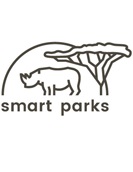 Smart Parks
Smart Parks
25 March 2019 12:00am
Survey: Technology for Mitigating Impacts to Biodiversity
21 March 2019 5:32pm
WILDLABS Virtual Meetup: Low Cost, Open-Source Solutions
18 March 2019 12:00am
AudioMoth 2.0 Development
17 March 2019 2:44am
AudioMoth user guide
27 February 2019 9:35pm
14 March 2019 10:08am
That also sounds like a good idea :)
14 March 2019 1:52pm
Hi again,
I agree; it's very important that everyone is able to contribute to the guide. Thanks for taking the lead on that, Akiba. To that end, I just made my GitHub repo publicly editable, so please feel free to add to it if you want to use a GitHub repository.
However, a Google Doc would be much easier for the general public to contribute to. If you choose that route instead, please use whatever you want from my repository. :-)
I personally like to use the guide as a single document instead of a Wiki. It's easier to read through, and since everything is on the same page, you can just CTRL+F to find a specific word or section. Also, it's helpful to be able to download it as a .pdf, or print it out and refer to it in the field.
Tessa
14 March 2019 3:43pm
Hi Tessa.
Thanks and also thanks for being so generous with your work :)
Regarding the format, how do you all think if we have a single document and a wiki? I could handle the single document if David wanted to do the wiki. One potential issue would be synchronization, but since many wikis keep a change list, perhaps we can schedule periodic document updates based on the wiki changelists. We can also maintain a document changelist in case the changes need to go in the other direction.
Any comments or suggestions?
Akiba
Tech for Rewilding Conflicts
22 November 2018 10:54am
13 March 2019 12:34pm
Hi Laurens,
Would be great to connect. Sent you a mesage directly.
Best,
Vance
14 March 2019 2:48am
Interesting conversation. From Tech side there is solution which we are workign on.... Its low cost and tech heavy. Attaching Idea
Toughts please.
14 March 2019 12:21pm
Cool idea Ashwan. Looks similar to the virtual parks idea that Laurens is leading. Have you seen it? Also check out rewilding.io and get an entry in to the contest!
Great introduction to IoT
10 December 2015 5:13pm
14 March 2019 7:25am
The talk is really interesting and I agree that it's important to think about the bigger issues of the world and then use technology as just one of the tools to try and tackle them.
IoT Roots are Actually in Habitat Monitoring
14 March 2019 5:59am
Internet of Elephants
4 January 2016 12:01pm
28 August 2017 10:01pm
Love the name. I am doing work around sensor networks for conservation. You have grown quite the team. I am also leavine the corporate IT world as a software engineer to start a conserve/agri tech start-up. I would like to keep it as a social enterprise as well.
14 March 2019 5:56am
Will your startup be involved in sensor networks for conservation? I'm very interested. Currently we create sensor networks for developmental infrastructure and agriculture and am curious about using it for wildlife monitoring and conservation.
Welcome to the WILDLABS.NET IoT Group!
15 December 2015 7:38pm
21 December 2015 4:57pm
Hi, everyone, I'm John Waugh. I manage the climate and environment program for a small but growing consultancy, Integra LLC, based in Washington DC. Another core area for Integra is information and communications technology for development, hence my interest in the intersection between technology and biodiversity conservation. I'm convinced that there's a bright future for the Internet of Things in the area of conservation, and I look forward to working with you to build a community of practice. It would be very helpful to me to hear your thoughts about what information is most needed. Should we have a directory of experts? Of vendors of hardware and software? Or documentation of existing projects and the technologies being used? I'm sure all of these and more are in demand. I'd like to help get the ball rolling; what should our initial focus be? I'm looking forward to being in touch.
best
John
14 March 2019 5:28am
Hi everyone.
I'm Akiba and I'm an engineer by trade specializing in wireless sensor networks and communications. I generally work with groups like World Bank on technology for development and we are working with UNESCO and other organizations to put on an ICT4D (Information and Communications Technology For Development) conference in Japan later this year.
I've also started and run a communal farm which houses both farmers and techies and as the farm is expanding, we have found that we've been given a forest and part of a mountain to manage along with all its inhabitants. We are planning animal surveys and will also be studying very hard on forestry management. Wildlife conservation has been an interest of mine for a while and I'm looking forward to working and collaborating with people on WildLabs in that realm.
Akiba
Have your say - take the WILDLABS Community Survey 2019
13 February 2019 6:04pm
12 March 2019 11:43am
Hi everyone,
So a quick update on this. We've had 100+ responses so far which lots of really interesting feedback coming through. We're going to close this year's survey at the end of the month, so you still have time to add your perpsective to the mix.
In the meantime, I thought I'd share some of the early results we've had so you can see what trends are coming through. I'll share the results in seperate comments in this thread over the next few days so it's not too overwhelming. I'm very interested to hear any thoughts about these early results - do you agree with them, are they unexpected?
The first one is about the functionality you want us to concentrate on adding to WILDLABS in the next 12 months. From responses so far, the highest priority is for what I'd classify as tools for collaboration. There are a lot of things you'd classify as nice to have, but hands down you'd prioritise new tools that allow you to share information/updates about your work, and make it easier to find people with skills you need or projects that need your skills. are what what you want to see asap.
Conversely, you're not particularly interested in knowing more about how things you post here are doing (e.g. personal analytics or a badging system). This is interesting - I suspect it's because it doesn't really matter how many people see what you post, the main thing that matters is the practical outcome and whether you get the answer or connection that was the reason behind you posting.
What do you think, do the trends about functionality priorities agree with what you think?
Steph

Update on Arribada's Low Cost Open Source Sea Turtle Tag
 Rachael Kemp
Rachael Kemp
12 March 2019 12:00am





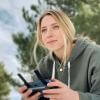





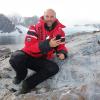
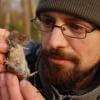







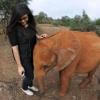



12 April 2019 12:33pm
Interesting question. Dropping some replies you're already getting from @samrye and @Alasdair on Twitter here to help move the discussion along:
Thoughts... I have many.
Are you wondering about likelihood, or something else though?@Al2kA might have some musings...?
— Sam Rye (@sam__rye) April 12, 2019
It’s an interesting thing to think about the future players of conservation efforts. Data science will certainly be a driving force and who better to take a slice of the pie than tech monopolies?
— Spencer Dixon (@spencerldixon) April 12, 2019
This has already started with Microsoft appointing @lucasjoppa as Chief Environmental Officer. Private sector will take bigger steps into conservation.
— Spencer Dixon (@spencerldixon) April 12, 2019
There's definetly a rise in the big players exposing their tools for conservation use (Google's TensorFlow), but long-term in field commitment is their achilles heel. They still need NGOs & will predominently focus on big data that's eaiser to access (remote sensing vs in field)
— Alasdair Davies (@Al2kA) April 12, 2019